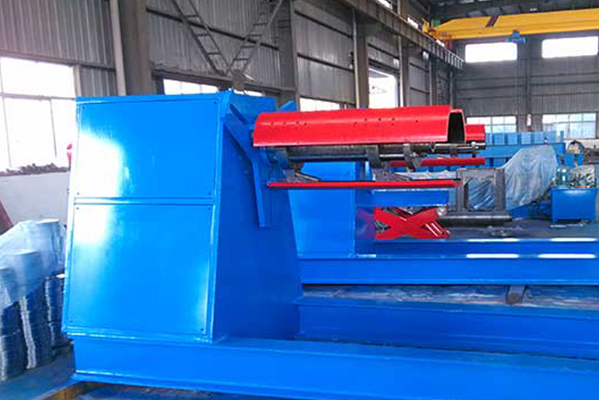Navigation Menu
Contact Us
- Email:
- info@wxavatar.com
- Address:
- Yurong Village, Yuqi Street, Huishan District, Wuxi, China.
Release Date:Mar 01, 2025 Visit:58 Source:Roll Forming Machine Factory
In the world of machinery, manufacturing, and construction, the roller is a fundamental component that plays a critical role in a wide range of applications. From shaping materials to smoothing surfaces, the roller is a versatile tool designed to perform specific tasks with precision and efficiency. But what exactly is the main purpose of a roller, and why is it so essential across various industries? Let’s explore the primary functions of rollers, their applications, and the value they bring to modern processes.
At its core, the roller is a cylindrical device that rotates around an axis, often used to apply pressure, shape materials, or facilitate movement. Its design and functionality vary depending on the application, but the underlying principle remains the same: to achieve consistent and controlled results through rolling motion. Rollers are integral to industries such as manufacturing, construction, printing, and transportation, where they serve diverse purposes.
One of the primary purposes of a roller is to shape and form materials. In manufacturing processes like metalworking, rollers are used in roll forming machines to bend and shape metal sheets into specific profiles. This is particularly useful in producing components for automotive, aerospace, and construction industries, where precision and uniformity are paramount. Similarly, in plastic and rubber manufacturing, rollers help mold raw materials into sheets, films, or other desired forms.
Another key purpose of a roller is to apply pressure or compress materials. In the construction industry, heavy-duty rollers are used to compact soil, asphalt, or concrete, ensuring a solid and level foundation for roads, buildings, and other structures. This process, known as compaction, enhances the durability and stability of the surface, preventing issues like cracking or settling over time. Without rollers, achieving such results would be labor-intensive and time-consuming.

Rollers also play a vital role in smoothing and finishing surfaces. In printing presses, for example, rollers are used to evenly distribute ink onto paper, ensuring high-quality prints with consistent color and clarity. In the textile industry, rollers smooth out fabrics during production, removing wrinkles and imperfections. This application highlights the roller’s ability to deliver precision and uniformity in finishing processes.
Transportation and material handling are other areas where rollers are indispensable. Conveyor systems rely on rollers to move goods and materials efficiently across production lines, warehouses, and distribution centers. These rollers reduce friction, allowing for smooth and continuous movement, which is essential for maintaining productivity in fast-paced environments. Additionally, rollers are used in heavy machinery like cranes and forklifts to facilitate the lifting and moving of heavy loads.
The roller also serves as a critical component in machinery and equipment. For instance, in industrial machinery, rollers are used to guide, support, or align moving parts, ensuring smooth operation and reducing wear and tear. In the automotive industry, rollers are found in engines, transmissions, and suspension systems, where they help reduce friction and improve performance.
One of the standout advantages of rollers is their ability to enhance efficiency and reduce manual labor. By automating repetitive tasks such as material shaping, compaction, or transportation, rollers save time and effort while maintaining consistent quality. This makes them invaluable in industries that require high-volume production or precision work.
In conclusion, the main purpose of a roller is to facilitate shaping, compressing, smoothing, and transporting materials with precision and efficiency. Its versatility and reliability make it an essential tool across a wide range of industries, from manufacturing and construction to printing and transportation. As technology continues to advance, the applications of rollers will only expand, further solidifying their role as a cornerstone of modern processes. Whether it’s compacting soil for a new road or ensuring flawless prints on paper, the roller remains a vital component in achieving high-quality results and driving progress.